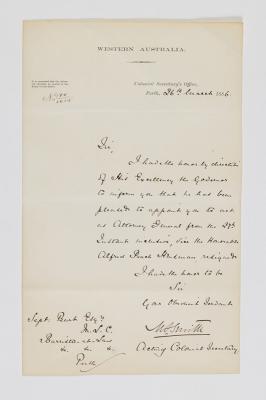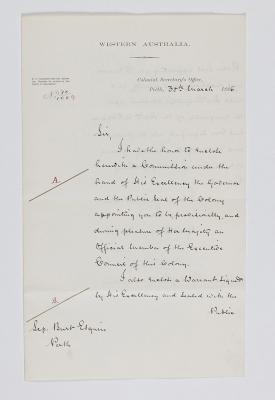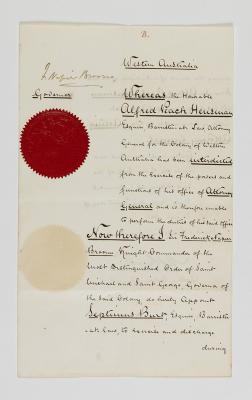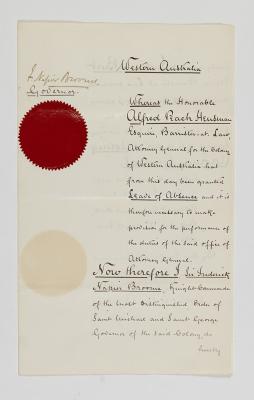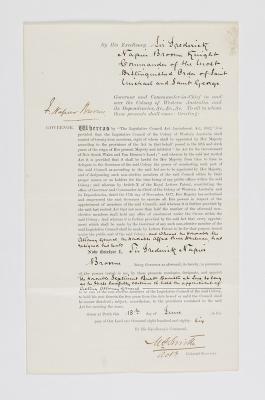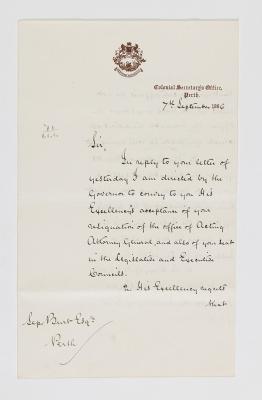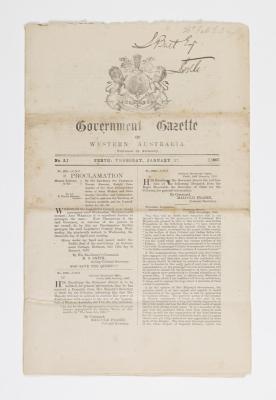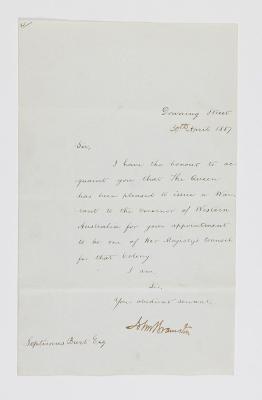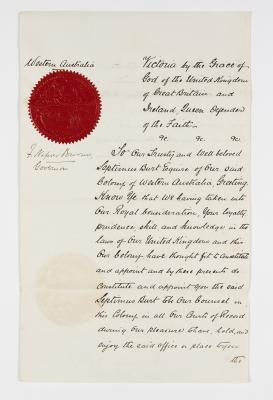WRITING BOX, WILLIAM HENRY MACKIE C.1825
Rectangular, wooden box-shaped compendium with hinged lid and wood veneer that is cracked, broken and missing. Small, hinged tarnished, metal inset handles at either end. RH handle is also handle for concealed drawer that is lined with a colour print of a bunch of flowers on a white background. Small keyhole at centre on front panel (no key). Piece of wood missing from front edge of lid.
The box opens into a sloped writing compendium with green textile. Top flap of green slope lifts to reveal a compartment underneath lined with paper decorated with white flowers and buds with green foliage on light grey/brown background. Rows of flowers are separated by lines of green leaf-shaped pattern with white surround. Note written in ink on white paper is stuck to the underside of lid, which is also lined with green textile.
Lower green flap lifts to reveal compartment lined with green textile with black and white engraving depicting deer in a forest. This image was covered with a layer of brown paper, which was removed during conservation works in 2022. Reverse of green flap still covered with brown paper.
Metal pen nib found inside the compendium.
Belonging to Judge Mackie, believed to have been brought by him to Western Australia in 1833.
Details
Details
Note stuck to underside of lid reads 'This desk was brought here / by Mr W. H. Mackie (probably / about a hundred years ago). / Mr Mackie was the fist judge in West Australia. / [initials illegible] / Nov 1933.'
This portable writing desk, or compendium, belonged to William Henry Mackie (1799 - 1860). It is recorded that Mackie brought the compendium with him when he came to the colony in 1833, although he first arrived in 1829 as a free settler. Mackie's exact use of the compendium is not known, however he was instrumental in formulating much of the early legislation in the Swan River Colony and so possibly used it in his work as well as for personal purposes.
Mackie was the first person to hold an official judicial position in Western Australia. He had studied the prescribed period at one of the Inns of Court in England and was a graduate of Cambridge University. He may have held hopes of securing a legal position in the new settlement. On 9 December 1829 the first efforts to formally establish a system of law and order were made when Lieutenant-Governor Stirling appointed Mackie and seven other colonists Justices of the Peace in the Swan River Colony. On the same day Mackie was appointed Chairman of the Quarter Sessions. Western Australia’s first piece of legislation was the Act of 1832 under which the Civil Court was established. The Civil Court was the ancestor to the Supreme Court of Western Australia. In 1834 the Colonial Office combined the positions of Civil Commissioner and Chairman of Quarter Sessions. Mackie served in these roles for over 23 years until his retirement in 1857.
Other items from Old Court House Law Museum
- LETTER, APPOINTMENT OF SEPTIMUS BURT ATTORNEY GENERAL
- LETTER, ACTING COLONIAL SECRETARY TO SEPTIMUS BURT RE APPOINTMENT ACTING ATTORNEY GENERAL
- APPOINTMENT, SEPTIMUS BURT AS ASSISTANT ATTORNEY GENERAL
- COMMISSION, SEPTIMUS BURT, MEMBER OF EXECUTIVE COUNCIL
- LETTERS PATENT, SEPTIMUS BURT AS ATTORNEY GENERAL
- PROCLAMATION BY GOVERNOR BROOME THAT SEPTIMUS BURT BE APPOINTED AS MEMBER OF THE LEGISLATIVE COUNCIL
- LETTER, ACKNOWLEDGING SEPTIMUS BURT'S RESIGNATION, EXECUTIVE COUNCIL AND LEGISLATIVE COUNCIL
- GOVERNMENT GAZETTE, SEPTIMUS BURT, APPOINTMENT AS REPRESENTATIVE COLONIAL CONFERENCE, LONDON
- LETTER, FROM COLONIAL SECRETARY TO SEPTIMUS BURT, APPOINTMENT STATE REPRESENTATIVE COLONIAL CONFERENCE
- LETTER, SEPTIMUS BURT, QUEEN'S COUNSEL APPOINTMENT
- LETTERS PATENT, SEPTIMUS BURT, QUEEN'S COUNSEL APPOINTMENT, 1887
- LETTER, FROM COLONIAL SECRETARY TO SEPTIMUS BURT, QUEEN'S COUNSEL APPOINTMENT
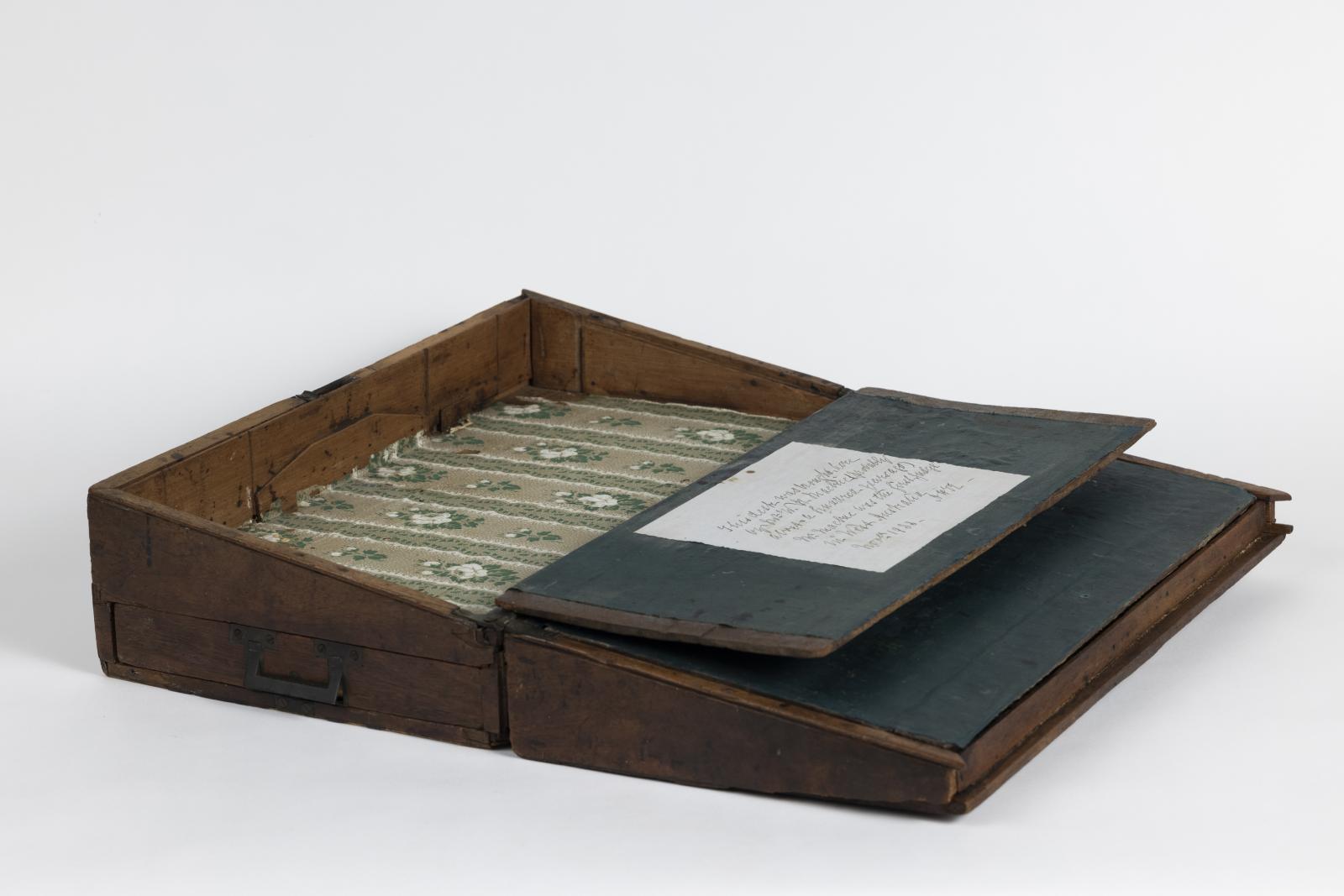
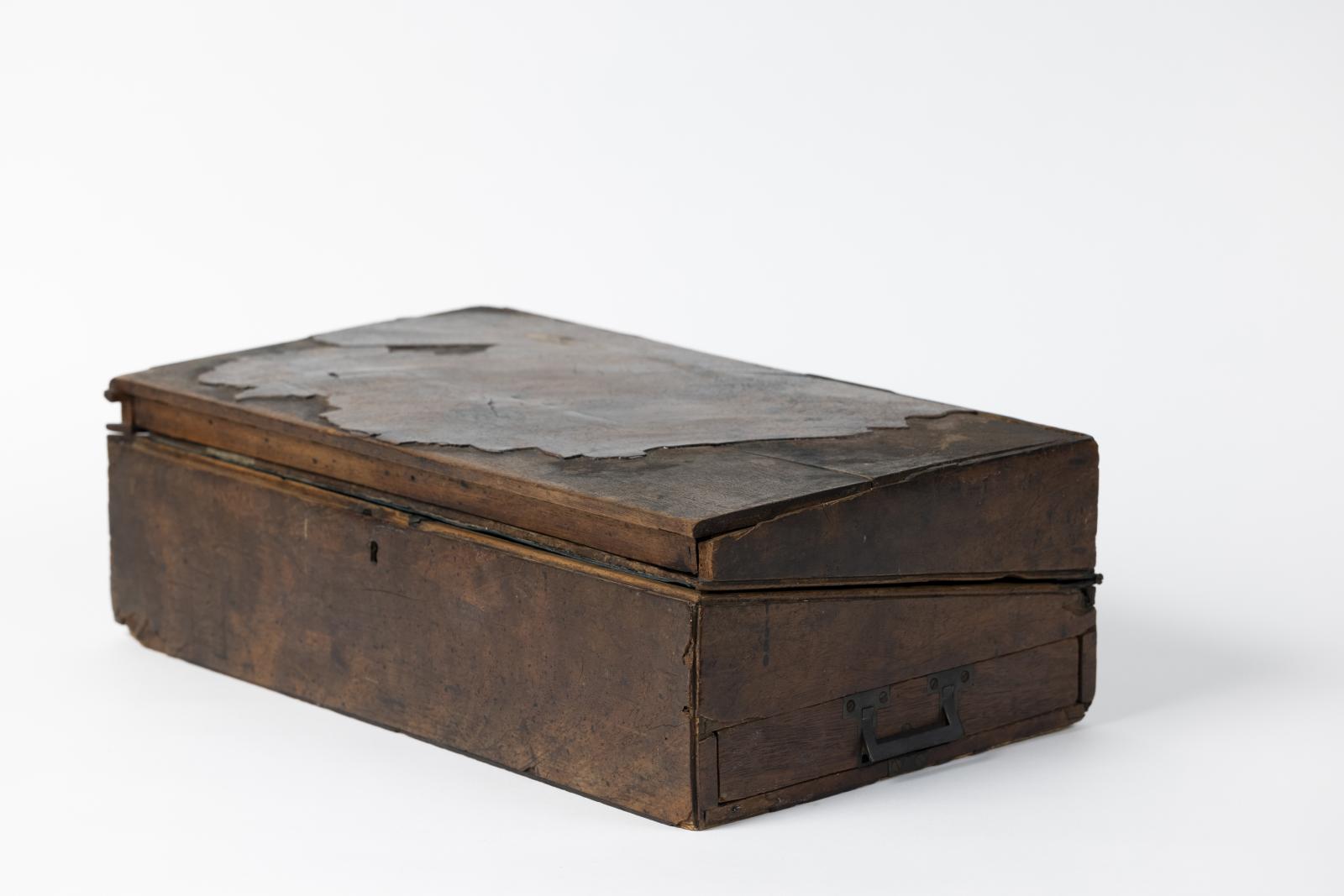
Scan this QR code to open this page on your phone ->

